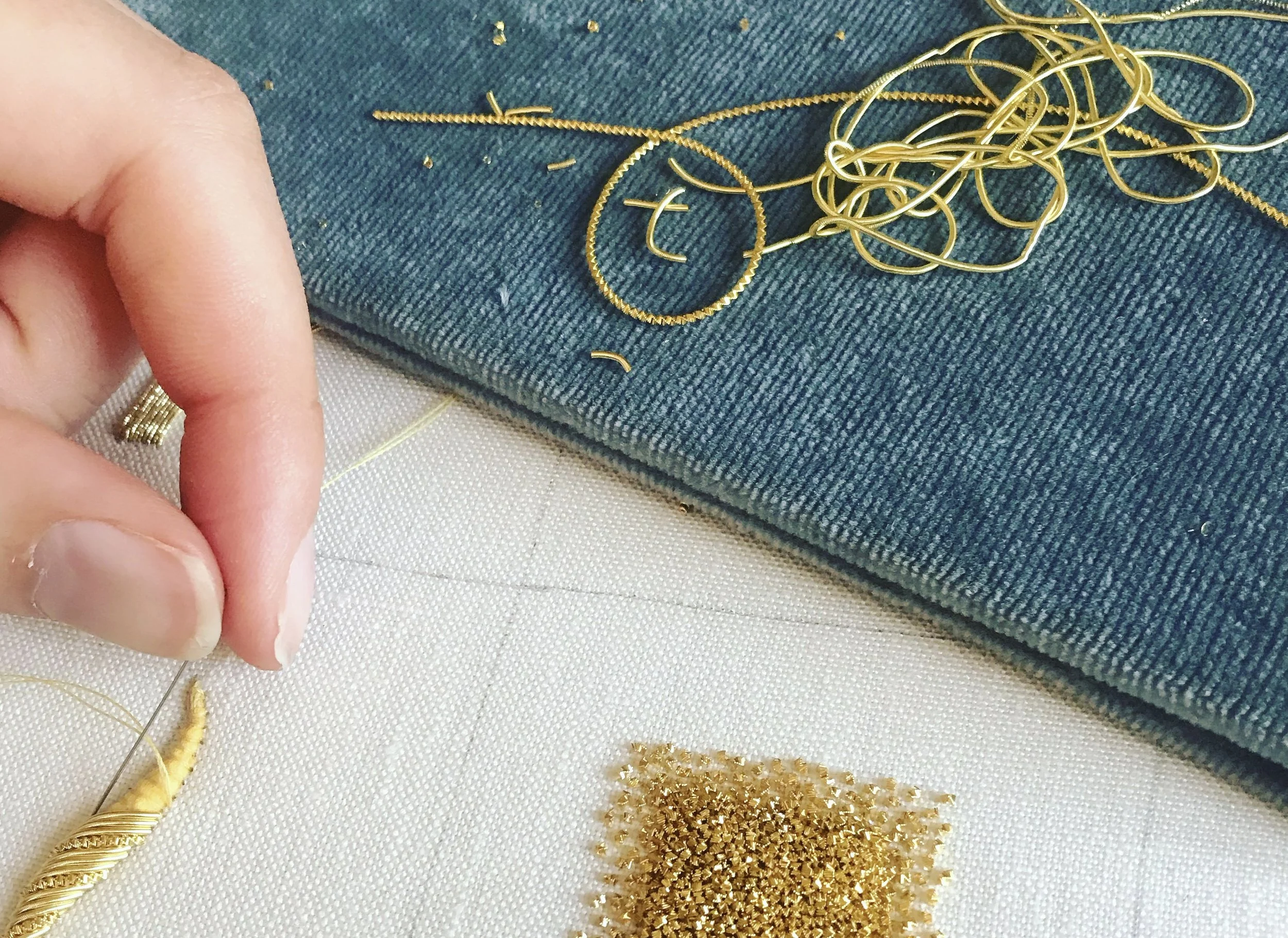Top 7 Must-Have Tools for Goldwork Embroidery
Are you new to goldwork and wondering which tools are essential to get started? Or perhaps you’re struggling with a specific technique and searching for the perfect tool to achieve better results? Look no further! Here’s my list of the top 7 goldwork tools that no embroiderer should be without. Let’s dive in:
1. Mellor
A mellor is an indispensable tool for your goldwork kit (and great for canvas work too). This laying tool ensures smooth placement of chips and cutwork. The pointed end is slid under the thread as you pull it through the fabric, maintaining a loop and preventing knots, which protects delicate work. The flat paddle end is perfect for smoothing curves in pearl purl and couching.
2. Angled Tweezers
Ideal for creating sharp points in pearl purl or tight loops in passing thread, angled tweezers give you precise control. Handle with care, though, as they can damage the delicate gold threads if used too forcefully.
3. Rubber-Ended Tweezers
If angled tweezers feel too harsh on your threads, try rubber-ended tweezers. While they may be less precise, they help minimize the risk of damaging metal threads or wires, making them a great alternative for beginners or more fragile work.
4. Sharp Angled Scissors
Struggling with burrs or tags when cutting purl or bright check? A sharp pair of angled scissors is the solution. The sharpness ensures clean cuts, and the angled design is perfect for cutting chips on a velvet board or using on the fabric surface when cutting pearl purl once it’s been stitched down.
5. Sharp Straight Scissors
A versatile staple for any embroidery kit, sharp straight scissors are essential for making clean, precise cuts across a range of goldwork techniques. Keep them sharp for the best results.
6. Velvet Board
A velvet board is invaluable for cutting chipping or cutwork, as it prevents small pieces from scattering. You can make your own by attaching velvet to a board or container lid, providing a soft, grippy surface for your work.
7. Koma
When couching large areas with continuous threads like passing, Japanese, or twist, a koma is a game-changer. It keeps threads organized and prevents tangling or damage. Wind each couching thread onto separate komas, and their square ends will sit flat on your fabric surface for stability.
With these tools in your kit, you’ll be ready to tackle any goldwork project with confidence!

